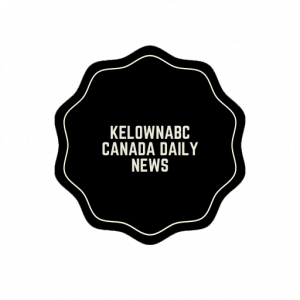No more supportive housing is planned for Kelowna between now and 2026. This is Hearthstone, which opened in 2018.
(ROB MUNRO / iNFOnews.ca)
May 06, 2022 – 7:00 PM
In 2018, Kelowna’s Journey Home Society set a target of reaching functionally-zero homelessness by the end of 2025.
Given the dramatic increase in housing costs in Kelowna since then, that target won’t be met without a doubling in the number of spaces provided by BC Housing.
READ MORE: Public fears prolific offenders, not housing projects: Minister Eby
In fact, by 2026, the number of visibly homeless people on Kelowna streets and living in shelters could almost double to 847 people from 472 currently in that situation.
“The desirability of relocation to the Okanagan on a national level has risen significantly, driven by an increase in remote working opportunities within many industries,” states a lengthy report going to Kelowna city council on Monday. “Coupled with this, we have witnessed an increase in homelessness due to rising rentals prices, transitions of properties into Airbnb models, land development, and renovations. Across our community, housing for low to middle income individuals, couples and families is becoming unattainable.”
The report, provided by Journey Home, says more than 8,000 households in the city are spending more than 30% of their income on rent. Some are spending more than 50%. All are at risk of falling into homelessness.
“Limited land availability for development, coupled with an increase in demand, has created a strong economic playing field for property and landowners to sell their assets far above historical and current values,” the report says. “This has resulted in many evictions into homelessness over the past two years, particularly for rentals that were historically at the lowest end of the market.”
Housing subsidies are not enough.
“In many cases there is still a gap between income with rent supplements and affordable units for rent,” it says. “Rent has increased by approximately 26% in the one-year period between October 2020 and 2021.”
The increasing cost of living is not helping and wages are not keeping up.
“The living wage determination of $18.49/hour for Kelowna simply does not reflect the reality of the growing cost of housing and essentials like transportation and food; and most non-professional roles do not reflect a true living wage,” the report says. “Unless addressed, this will continue to drive more individuals and families into homelessness.”
From 2016 to 2020, the number of supportive housing units in the city increased to 535 from 307 but, in order to keep up with the growing need, BC Housing needs to build another 516 units by 2026.
“Between 2021 and 2026, no new supportive housing or shelter spaces are currently anticipated,” the report says. “The numbers provided must be seen as conservative estimates and the true number of units required is likely to be significantly greater than shown.”
The number of shelter spaces, designed for short-term stays, grew by 83% to 245 spaces last October from 132 in April 2020.
The number of people staying in shelters grew to 392 in 2021 from 241 in 2018.
READ MORE: iN PHOTOS: A tour through Kamloops’ newest homeless shelter
The report, which is a quarterly update on society’s efforts, provides a long list of accomplishments.
Among those is a “by-name” system of accounting for each homeless person. It was piloted in 2020 and will be fully rolled out this year.
The idea is to create more accurate and up-to-date information on the number of people who are homeless so future housing needs can be more accurately forecast.
It will also allow agencies to better coordinate their efforts and avoid duplication of services.
But at the core of the report is the simple fact that the high cost of living is driving more people out of their homes so BC Housing needs to come back into Kelowna and build more.
To contact a reporter for this story, email Rob Munro or call 250-808-0143 or email the editor. You can also submit photos, videos or news tips to the newsroom and be entered to win a monthly prize draw.
We welcome your comments and opinions on our stories but play nice. We won’t censor or delete comments unless they contain off-topic statements or links, unnecessary vulgarity, false facts, spam or obviously fake profiles. If you have any concerns about what you see in comments, email the editor in the link above.
News from © iNFOnews, 2022










